Vietnam is not outside the general trend in the world , forced to make efforts to implement measures to reduce greenhouse gas emissions towards the goal of achieving net zero emissions by 2050.

In the globalized world, building a carbon credit market and green finance is an inevitable trend to increase global competitiveness.
Meeting the carbon tax barrier standards that major markets are applying will play a decisive role in the new race in the global supply chain.
Practical
The impact of climate change and environmental degradation not only negatively impacts people's quality of life, but also seriously affects the sustainable development of countries.
Vietnam is not out of the general trend with countries around the world, forced to make efforts to implement measures to reduce greenhouse gas emissions towards the goal of achieving net zero emissions by 2050.
This goal is not only an environmental imperative, but also presents significant opportunities for organisations of all sizes; including cost savings from energy efficiency, enhanced brand reputation, and aligning with growing consumer and investor demand for sustainable practices.
Carbon markets originated from the United Nations Kyoto Protocol on Climate Change (1997).
Countries with excess emissions rights are sold to or bought from countries that emit more or less than their committed targets. Since then, a new type of commodity has appeared in the world: certificates for reducing and absorbing greenhouse gas emissions.
Currently, the world trades carbon credits in two markets: mandatory and voluntary. In which, the mandatory carbon market is the market where carbon trading is based on the commitments of countries in the United Nations Framework Convention on Climate Change (UNFCCC) to achieve greenhouse gas reduction targets.
Currently, the largest are the European carbon market and the US carbon market... The voluntary carbon market is a market based on bilateral or multilateral agreements between organizations, companies or countries.
Credit buyers engage in transactions on a voluntary basis to meet environmental, social and corporate governance (ESG) policies to reduce their carbon footprint.
A carbon credit is a certificate that represents the reduction of one ton of carbon dioxide (CO2) emissions. Carbon credits are traded on carbon markets, where businesses, organizations, and individuals can buy and sell carbon credits to offset the greenhouse gases they emit.
The global carbon credit market is currently very vibrant. Developing this market is not only a green trend but also an opportunity for countries to move towards “Net Zero” and proactively respond to the complex climate change.
The world currently has 58 countries developing carbon markets, 27 countries applying carbon taxes and a number of countries applying both.
In Vietnam, a carbon market is being developed with the goal of achieving net zero emissions by 2050.
It is expected that by 2028, Vietnam will officially operate a carbon credit trading floor.
According to Mr. Bui Duc Hieu, Deputy Director of the Department of International Cooperation ( Ministry of Natural Resources and Environment ), Vietnam is a developing country with a highly "open" economy and production. If the market is applied early, it will mean forcing businesses to reduce emissions.

This will have a huge impact on the economy, causing businesses to spend a lot of money to convert technology; as well as consider the human resources to operate and master new technologies and machines.
However, to achieve the set goals, we still have to do, have to transform, because otherwise we will fall behind the world.
Deputy Prime Minister Tran Hong Ha said that the formation of a carbon credit market is to fulfill the commitment to reduce net greenhouse gas emissions to zero (Net Zero).
Using economic tools to manage greenhouse gas emissions of enterprises. The goal is to create a public and transparent carbon credit market, based on determining total emissions, allocating emission quotas to localities, sectors, and even to individual emitters; using economic tools to change awareness and behavior in greenhouse gas emissions.
Carbon credit markets can only be effective and have real benefits if they are applied synchronously, widely and fairly on a global scale.
However, to date, only a few countries and regions have begun to apply economic tools to manage carbon emissions for certain products and goods.
We must proactively build a carbon credit market right now to respond appropriately to countries and regions that have applied economic and financial tools to manage carbon emissions, avoid losses and disadvantages for businesses, and protect national interests.
Building regulations for carbon credit management
The carbon market was first mentioned in Decision 1775/QD-TTg of the Prime Minister in 2012, approving the Project on greenhouse gas emission management; management of carbon credit business activities in the world market. Accordingly, the Project reviews and supplements the system of legal documents as a basis for the organization and operation of the voluntary carbon credit market; develops policies to create conditions for localities, agencies, organizations and enterprises to invest in carbon credit business projects from forests in the direction of socializing forest protection and development...
Resolution 24-NQ/TW of the Party in 2013 on proactively responding to climate change, strengthening resource management and environmental protection has set the task of promoting greenhouse gas emission reduction activities suitable to our country's conditions on the basis of financial and technological support from countries and international organizations; developing the domestic carbon credit exchange market, participating in the global carbon market.
The Law on Environmental Protection 2020, effective from January 1, 2022, stipulates the organization and implementation of the carbon market. Accordingly, the domestic carbon market includes activities of exchanging greenhouse gas emission quotas and carbon credits obtained from domestic and international carbon credit exchange and offset mechanisms, in accordance with the provisions of law and international treaties to which Vietnam is a member.

The Law on Environmental Protection 2020 stipulates that facilities emitting greenhouse gases must conduct an inventory of greenhouse gases on the prescribed list, be allocated greenhouse gas emission quotas, and have the right to exchange and trade on the domestic carbon market.
Greenhouse gas emission facilities are only allowed to emit greenhouse gases within the allocated quota; in case there is a need to emit more than the allocated quota, they must purchase quotas from other entities through the domestic carbon market.
In 2021, Resolution 50-NQ/CP of the Government identified "implementing the Project on developing the carbon market in Vietnam" as one of the tasks to respond to climate change and protect the environment.
On January 7, 2022, the Government issued Decree 06/2022/ND-CP detailing the reduction of greenhouse gas emissions, ozone layer protection and carbon market development.
This Decree applies to organizations and individuals involved in greenhouse gas emission, emission reduction, and greenhouse gas absorption activities; participating in the development of the domestic carbon market; and producing, importing, exporting, consuming, and disposing of ozone-depleting substances and greenhouse gasses controlled under the Montreal Protocol on Substances that Deplete the Ozone Layer.
Mr. Nguyen Tuan Quang, Deputy Director of the Department of Climate Change, Ministry of Natural Resources and Environment, shared that Vietnam has issued many important strategic documents on green growth and sustainable development; including a roadmap for developing carbon pricing tools, especially a compliant carbon market.
Vietnam plans to accelerate the development of regulations on carbon credit management and greenhouse gas emission quota exchange activities; guide the implementation of domestic and international carbon credit exchange and offset mechanisms in accordance with legal provisions and international treaties, and pilot a carbon credit trading floor from 2025.
Operation and development of carbon market
In order to solve the problems related to climate change, the United Nations has organized many Climate Change Conferences to find the most effective and practical solutions. Accordingly, carbon trading is considered one of the most important tools in reducing greenhouse gas emissions.
The trading of CO2 emissions or carbon trading on the market will be done through credits, also known as carbon credits.
On January 7, 2022, the Government issued Decree 06/2022/ND-CP regulating the reduction of greenhouse gas emissions and protection of the ozone layer.
This Decree has specific provisions on the development roadmap and timing of the implementation of the domestic carbon market. In particular, by the end of 2027, regulations on carbon credit management, greenhouse gas emission quota exchange and carbon credit exchange will be developed; regulations on the operation of the carbon credit exchange will be developed; a pilot carbon credit exchange and offset mechanism will be implemented in potential sectors and guidelines for the implementation of the domestic and international carbon credit exchange and offset mechanism will be provided in accordance with the provisions of law and international treaties to which Vietnam is a member; a pilot carbon credit exchange will be established and operated from 2025; capacity building activities will be implemented and awareness raising activities on carbon market development will be raised.
From 2028, the official carbon credit trading floor will be put into operation; regulations will be put in place for connecting and exchanging domestic carbon credits with regional and global carbon markets.

In Vietnam, the domestic carbon market includes activities of exchanging greenhouse gas emission quotas and carbon credits obtained from domestic and international carbon credit exchange and offset mechanisms in accordance with the provisions of law and international treaties to which Vietnam is a member.
Mr. Tang The Cuong, Director of the Department of Climate Change, Ministry of Natural Resources and Environment, said that currently, there are 1,912 enterprises nationwide that are required to inventory greenhouse gases and meet emission quotas, and the enterprises will participate in reducing greenhouse gas emissions.
The Government has assigned the Ministry of Natural Resources and Environment to research and issue mechanisms for managing all carbon credits, and to move towards establishing a national registration system. Accordingly, all businesses and organizations with credits generated nationwide will have to register on this system.
When there is an exchange abroad, it is necessary to report to the management agency, because this activity affects the implementation of the overall emission reduction target.
As the domestic market becomes operational, the demand for carbon credits will increase and there will be a need for additional sources of credit goods in the future. The current issue is the need for additional regulations to specifically guide the exchange and purchase of credits in the domestic market, and regulations to manage the exchange and purchase of carbon credits internationally.
The benefits from the international market are huge and the demand is very high, but Vietnam still has to prioritize implementing national emission reduction targets by 2030 and net zero emissions by 2050.
Implementing the Party and State's policies and orientations on green economic development, many financial policies have been issued to concretize these policies, contributing to creating conditions to mobilize and attract investment resources towards green growth.
Minister of Finance Ho Duc Phoc said that from now until the end of 2027, the Ministry will focus on building a system of regulations and policies to create a foundation for the market to operate as well as establish and organize a pilot operation of a carbon credit trading floor, aiming to officially operate the carbon credit trading floor in 2028.
As the agency assigned to preside over the development and establishment of a carbon credit trading floor and promulgate a financial management mechanism for carbon market operations, the Ministry of Finance is researching and developing a Carbon Market Development Project to submit to the Prime Minister for approval.
Promote carbon credit projects
2023 marks a very important milestone when for the first time in the forestry sector, Vietnam successfully sold 10.3 million forest carbon credits through the World Bank (WB), earning 51.5 million USD (nearly 1,250 billion VND). This is the result of the implementation of the North Central Region Greenhouse Emission Reduction Payment Agreement (ERPA) signed on October 22, 2020 between the Ministry of Agriculture and Rural Development and the International Bank for Reconstruction and Development (IBRD) of the World Bank (WB) group.
The proceeds from selling forest carbon credits will be used to pay forest owners assigned to manage natural forests, commune-level People's Committees and other organizations assigned by the State to manage natural forests, and other entities involved in forest protection and development activities, contributing to reducing deforestation and forest degradation and increasing income and improving livelihoods for people working in the forest sector.
In Ho Chi Minh City, CT Group officially launched the ASEAN Carbon Credit Trading Platform Joint Stock Company (CCTPA), becoming the first enterprise in Vietnam to launch a carbon credit trading platform, proactively adapting to international environmental trade policies, while aiming for a low-carbon economy with outstanding growth rates.
According to Ms. Hoang Bach Duong, Permanent Vice President of CT Group, the activation of the ASEAN Carbon Credit Exchange Joint Stock Company in Vietnam will encourage businesses to switch to cleaner, lower-carbon and more efficient technologies.
Alongside the goal of reducing carbon emissions and helping to achieve the Net zero commitment by 2050.
ASEAN Carbon Credit Exchange Joint Stock Company also invests in researching the application of Blockchain for the carbon market, ensuring the highest transparency, reliability and efficiency in the management, allocation, transfer, calculation and tracking of carbon credits.
ASEAN Carbon Credit Exchange Joint Stock Company has signed a cooperation agreement with the Central Committee of the Vietnam Clean Water and Environment Association, the Institute for Development Communication Research, scientific research units, financial institutions and international inspection units... to combine resources to create breakthrough solutions, apply green technology to reduce carbon emissions, coordinate the organization of Green Transformation Programs, for the goal of Net Zero.
Vietnam currently has 28 coastal provinces and cities with 125 coastal districts, stretching along a coastline of more than 3,260km. Therefore, mangroves are important in addressing climate change, biodiversity loss and sustainable development as well as in enhancing climate resilience and green growth.
Mangrove forests are not only a valuable resource for the community and locality but also an important component contributing to Vietnam's "blue carbon" ecosystem.
Under the United Nations Development Programme’s Climate Promise Global Programme supported by the UK Government, the Programme assesses carbon stocks in 28 coastal provinces of Vietnam and identifies sustainable finance pathways and the potential of carbon markets in Vietnam.
Towards the carbon market, FPT IS (a member company of FPT Corporation) and Carbon EX - a carbon credit and renewable energy certificate trading platform in Japan have signed a memorandum of understanding on cooperation in providing services and solutions to promote carbon credit projects according to global standards such as Verra Carbon Standard, Gold Standard, J-Credit.
The joint efforts of the two sides are a breakthrough model to accompany the Vietnamese Government and businesses in reducing greenhouse gas emissions, achieving the Net Zero target by 2050.
According to Mr. Luong Quang Huy, Head of the Department of Greenhouse Gas Emission Reduction and Ozone Layer Protection, Department of Climate Change, Ministry of Natural Resources and Environment, during the implementation process, a number of establishments proactively contacted the Ministry's specialized agencies to discuss the contents and responsibilities that need to be implemented.
This shows that the interest and awareness of establishments in complying with legal regulations on greenhouse gas emission reduction has been and is being improved.
It can be seen that the participation of businesses and localities is important for an effective carbon market nationwide, towards the common goal of reducing greenhouse gas emissions and achieving net zero emissions by 2050./.
Source


![[Photo] Festival of accompanying young workers in 2025](https://vphoto.vietnam.vn/thumb/1200x675/vietnam/resource/IMAGE/2025/5/25/7bae0f5204ca48ae833ab14d7290dbc3)



![[Photo] Welcoming ceremony for Prime Minister Pham Minh Chinh and his wife on an official visit to Malaysia](https://vphoto.vietnam.vn/thumb/1200x675/vietnam/resource/IMAGE/2025/5/25/dc30203c3ae24da3990266ec3b29bb2d)
![[Photo] The coffin of former President Tran Duc Luong arrives in Quang Ngai](https://vphoto.vietnam.vn/thumb/1200x675/vietnam/resource/IMAGE/2025/5/25/1f1aca0d92ab47deae07934e749b35e6)






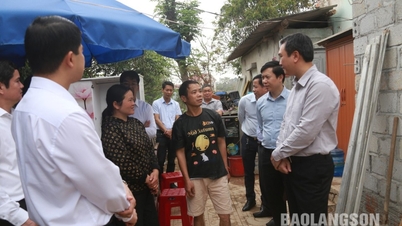



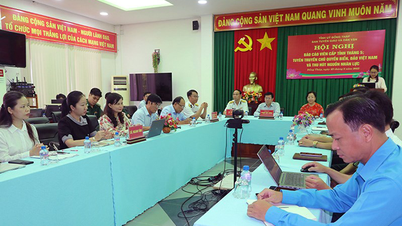
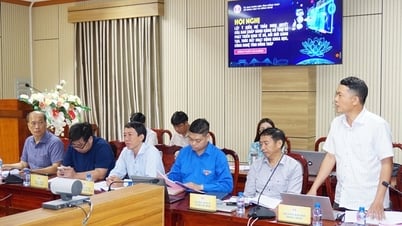

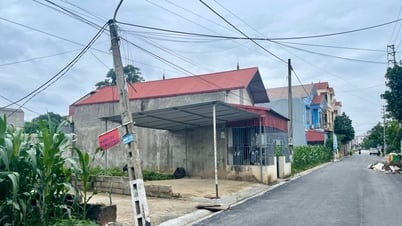






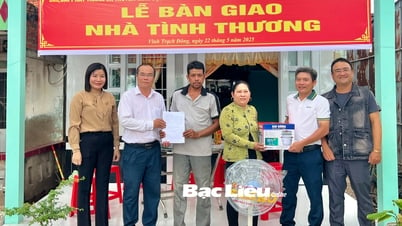
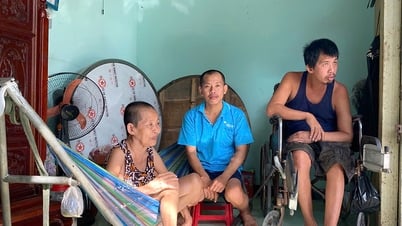
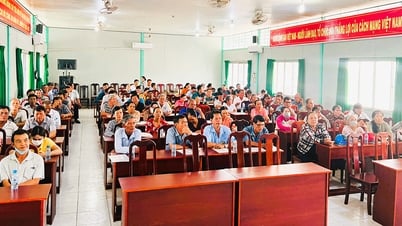
































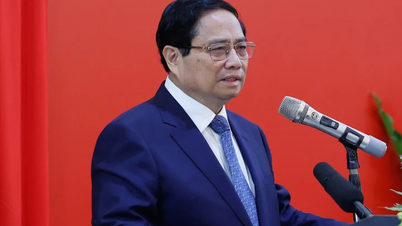

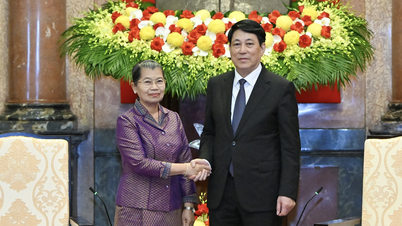











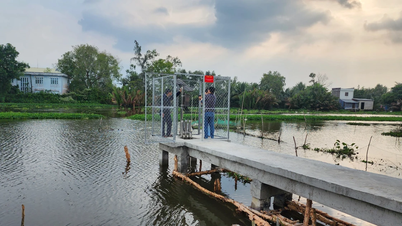



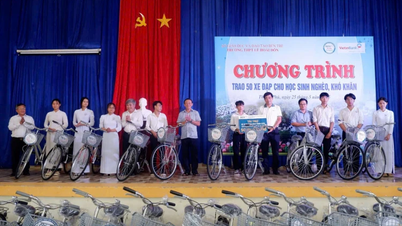

















Comment (0)